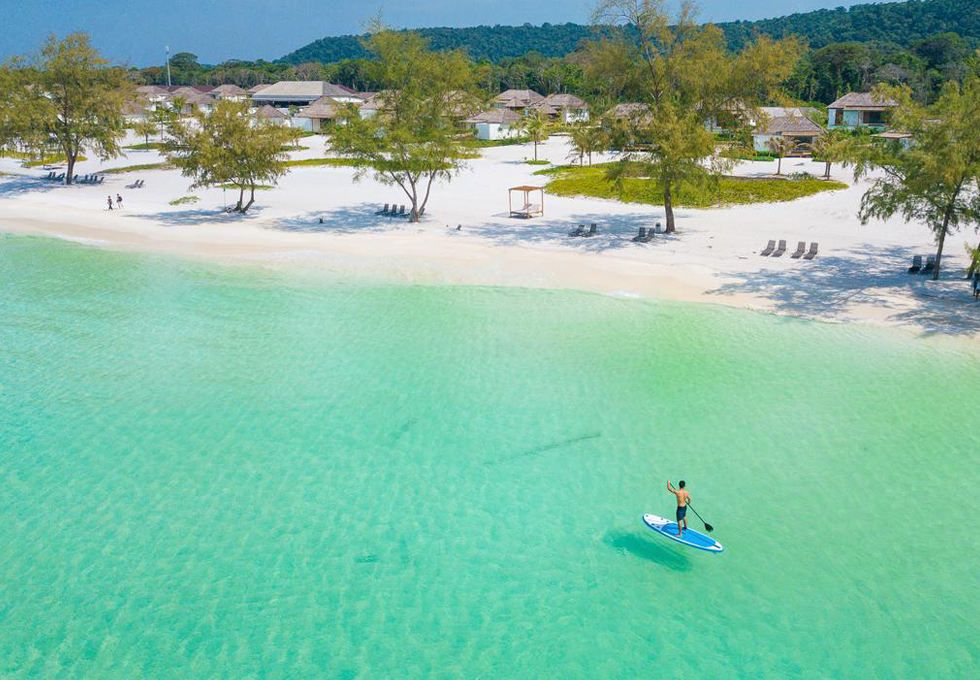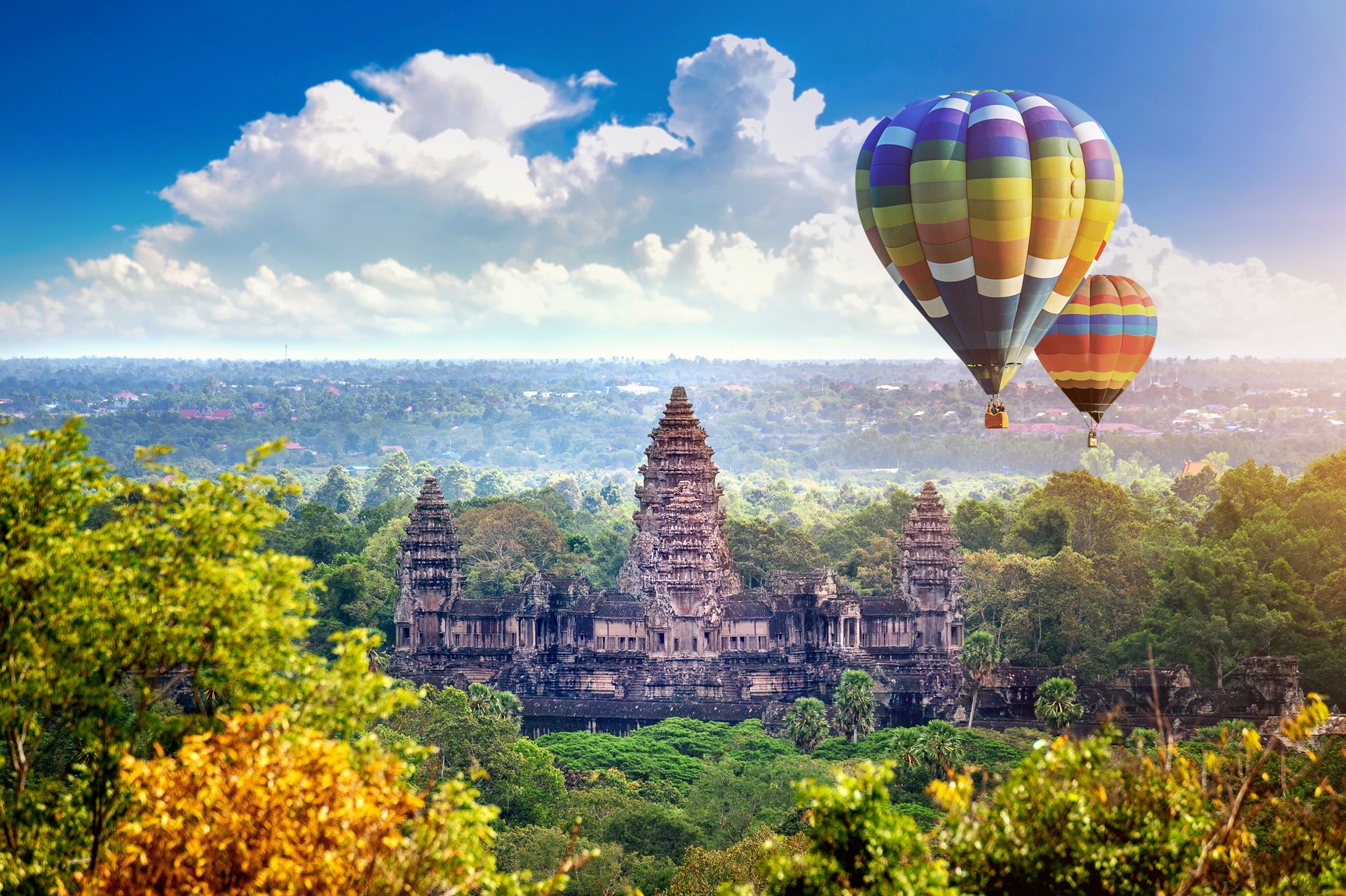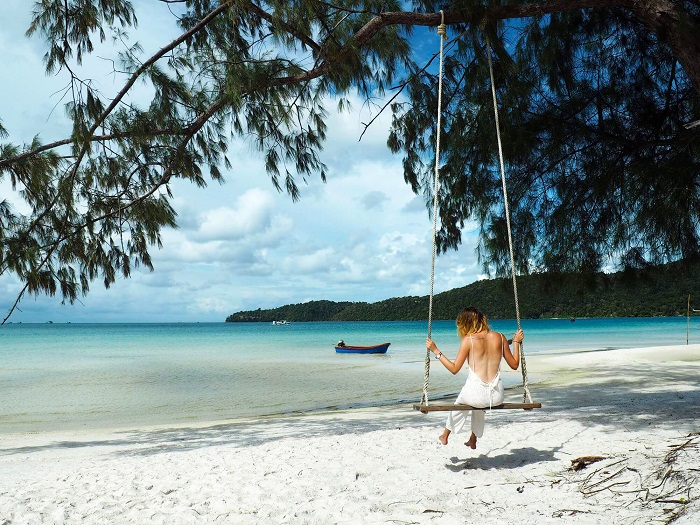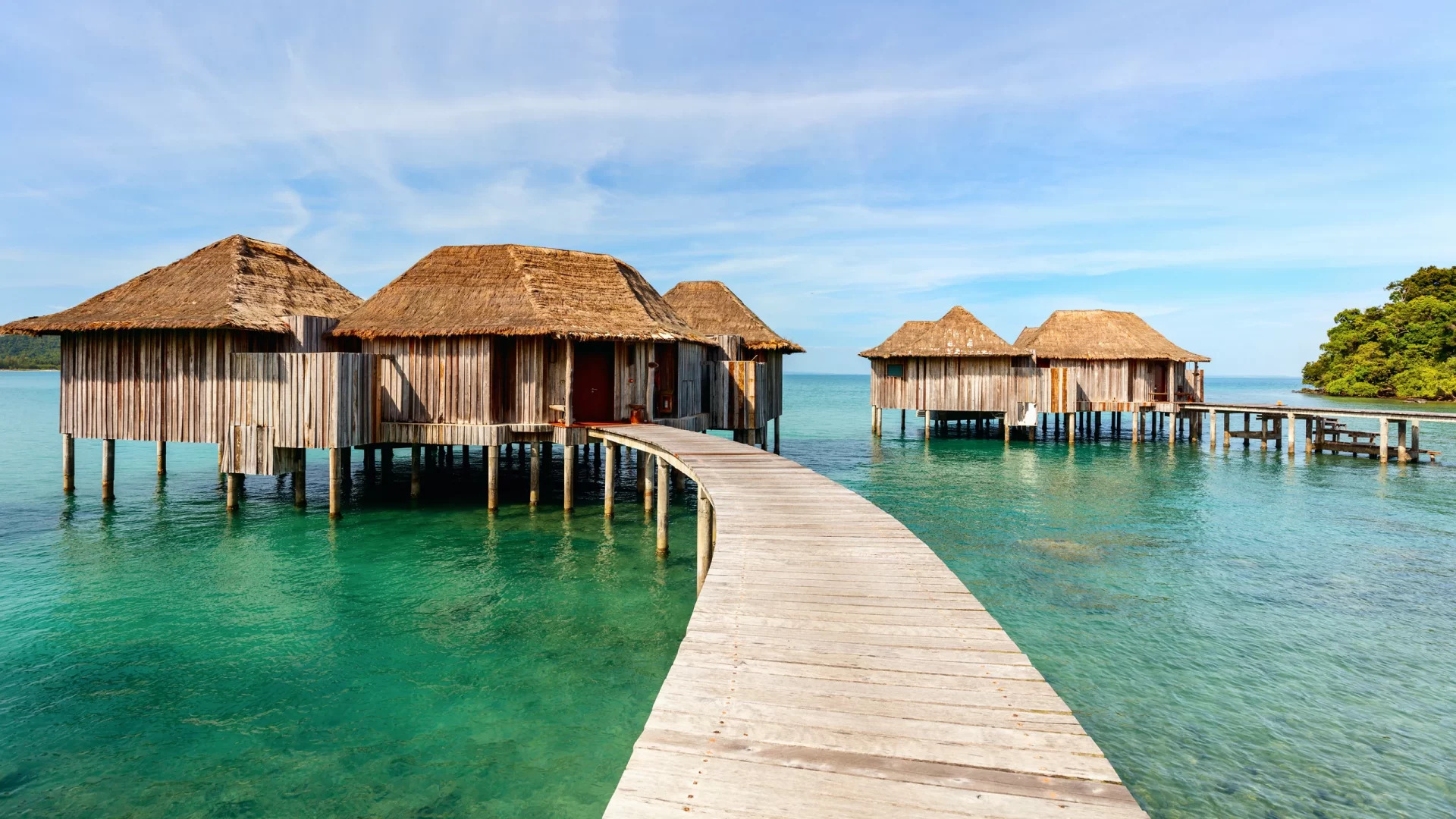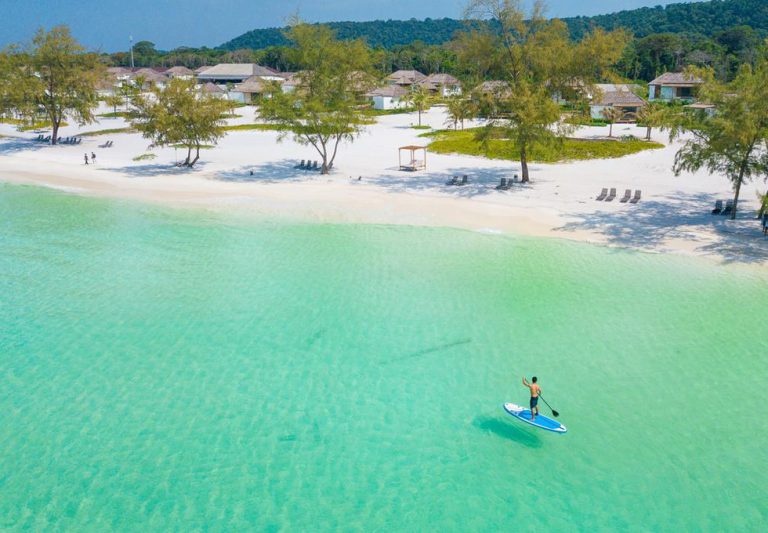CAMBODIA
Kingdom of Wonder, Feel the Warmth
Best known as both the home of the colossal temples of Angkor Wat and for the brutal Khmer Rouge era of the 1970s and later civil war, Cambodian history encompasses both some of humanity’s greatest artistic accomplishments and most horrific deeds.
The history is what draws most travelers here, but this Southeast Asian nation has more tourist attractions to offer for those who linger longer than a short temple hop to Siem Reap.
Beyond the temples, Cambodia is a prime destination for Southeast Asia travels that manages to charm all who come.
The coastline of sandy white beaches tempts every sun sloth. The jungle-swathed countryside is geared up for the more intrepid, and the buzzing capital of Phnom Penh envelops visitors in the frenetic pulse of contemporary Cambodian city life.

Top destinations
Top Activities
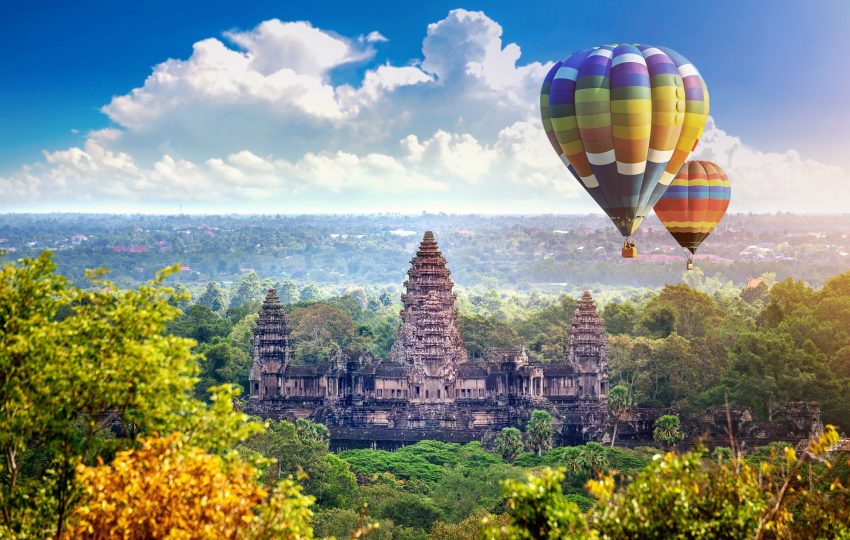
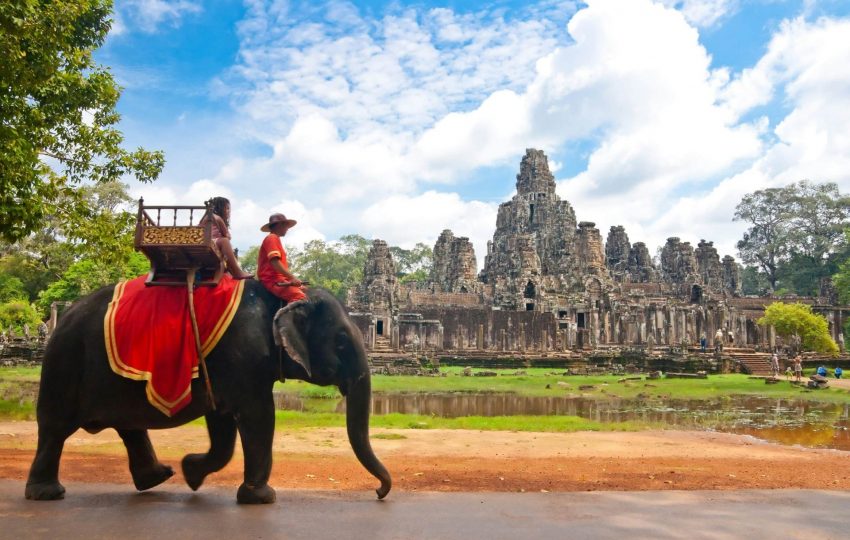

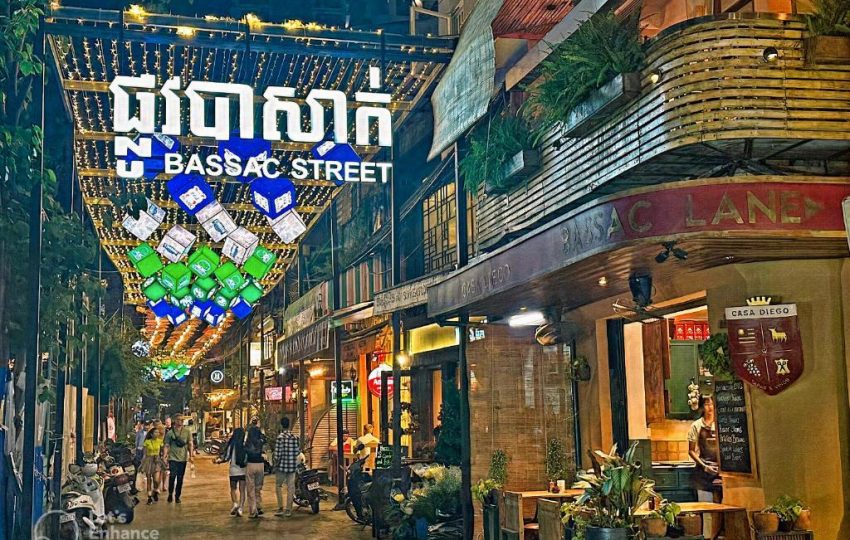


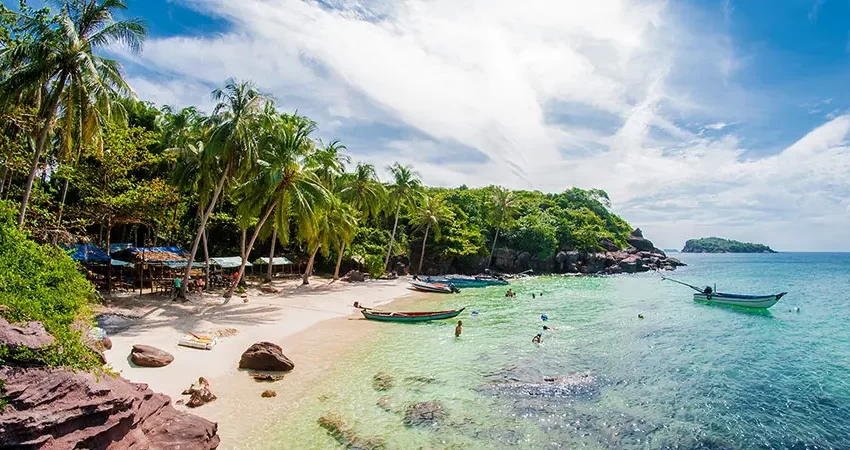
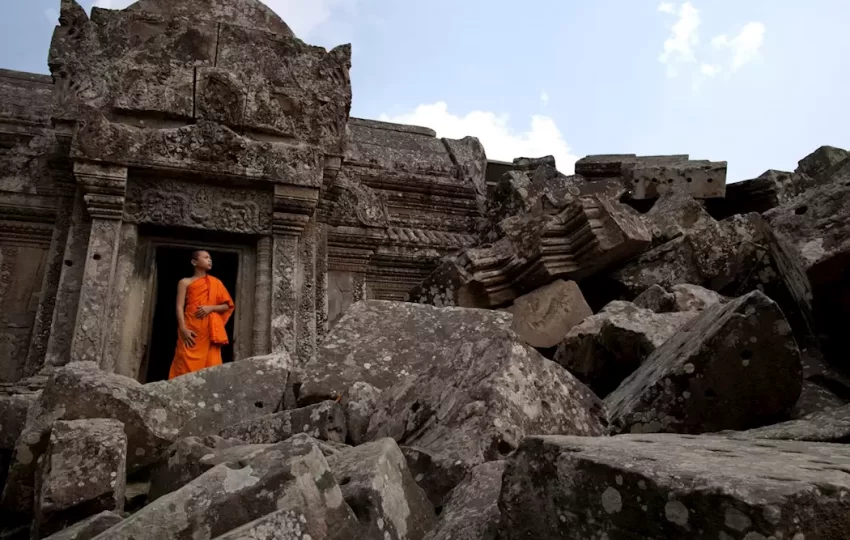
our unique tours
Cambodia Travel
The best time to visit Cambodia is between November and April, when there is very little rain. During this time you’ll see clear blue skies, making it a great time to enjoy a relaxing getaway on the southern coast. Temperatures stay at a warm 68°F year-round.
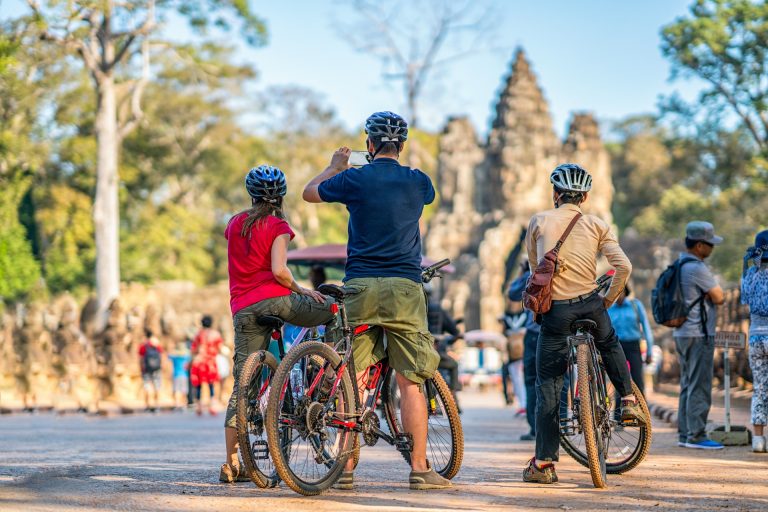
Between May and October, humidity increases and the rains come, assisting Cambodian farmers in the growing of their crops. However, you shouldn’t be deterred from traveling — the countryside is lush and green, rivers are full and flowing, and the temples are quiet. This is the best time to visit some of the outer-lying temples, which will often be deserted.
At the end of the summer one of Cambodia’s true wonders comes to life — Tonle Sap, the largest freshwater lake in Southeast Asia, home to Cambodia’s floating villages.
Yes, for most visitors to Cambodia, a tourist (T) visa is required for entry. Countries that require a visa include Australia, the UK, Canada, South Africa, the USA and Ireland. This visa costs USD $36 and is valid for 30 days. Please be mindful to carefully check your entry and exit dates as it is a serious offence to overstay.
The nationals from the following countries can stay in Cambodia for either 21 or 30 days (depending on the country) and do not need a tourist visa: Laos, Malaysia, Philippines, Singapore, Vietnam, Thailand, Indonesia, Brunei and Myanmar.
There are several options for getting a Cambodian visa.
- Apply online for an E-Visa before travelling. Approval can take around 3 days.
- Get a visa at a Cambodian Embassy or overseas consulate prior to arrival in Cambodia.
- For most visitors, you can also get a visa upon arrival at either the Phnom Penh, Sihanoukville or Siem Reap International Airports. If you are crossing into Cambodia by land from Thailand, Vietnam or Laos, you may also be able to obtain a visa from the International Check Point border. It is advised to check if your entry point can issue a tourist visa before you depart.
The nationalities that are required to obtain a visa in their country at the Royal Embassy of the Kingdom of Cambodia prior to travel are Afghanistan, Algeria, Arab Saudi, Bangladesh, Iran, Iraq, Pakistan, Sri Lanka, Sudan and Nigeria.
Please note that conditions are subject to change, so it’s always worth checking before you travel.
Air travel is a good way to save time and avoid uncomfortable journeys
While there’s a carbon cost, domestic flights offer a great way to avoid Cambodia’s unpredictable roads. The country’s three functioning airports in Phnom Penh, Siem Reap and Sihanoukville are well connected to each other by shuttle flights, and air travel in Cambodia is generally good value unless you book at the very last minute.
Airlines tend to come and go in Cambodia, with many of the newer carriers oriented to serve the booming Chinese market. Reliable options include Cambodia Airways, Cambodia Angkor Air and Lanmei Airlines, all with a mix of domestic routes and international services to other hubs in Asia.
Buses and minivans are the backbone of local transport in Cambodia
The range of options for traveling by road in Cambodia is extensive. On sealed roads, large and comfortable air-conditioned buses and speedy express minivans are the most popular choices. Elsewhere in the country, a shared taxi or local minibus is the way to go.
All of Cambodia’s major cities are now well connected to Phnom Penh by modern express buses, following sealed roads, but if you’re traveling from one end of the country to the other you may have to change buses in Phnom Penh or another hub, which can add to the overall journey time. While it doesn’t cover all of Cambodia’s bus companies, bookmebus is a reliable bus-ticket booking site.
Unlike the crowded local buses, express minivans operate a one-seat/one-passenger policy and are reasonably comfortable. However, some drivers seem to think they are taking part in a Formula 1 qualifier – wear a seatbelt if you have the option. Older minibusses serve most provincial routes but they are not widely used by tourists, as they are painfully slow and often uncomfortably overcrowded.
Share taxis supplement some regional routes
In these days of improving roads, share taxis – where each passenger pays for a seat and the vehicle leaves when it’s full – are losing ground to express minivans. When using share taxis, it’s an advantage to travel in numbers, as you can buy up spare seats to make the journey more comfortable. It is important to remember that there aren’t necessarily fixed prices on every route, so you may have to negotiate a fare.
Renting a car or motorcycle offers maximum freedom
Car and motorcycle rental is comparatively cheap in Cambodia and many visitors appreciate having the flexibility to visit out-of-the-way places and to stop when they choose. It’s more expensive than traveling by bus or minivan, but costs fall if you can share the cost with a group.
Cars can generally only be hired with a driver in Cambodia. This can be a useful way to explore Phnom Penh and Angkor, and travel between cities at convenient times. Some tourists with big budgets also arrange cars or 4WDs with drivers for touring the provinces. Hiring a car with a driver will cost US$40–50 for a day of driving in (or around) major towns, rising to US$60 or more, plus fuel, for travel in rural areas.
It’s also possible to explore Cambodia by rented motorcycle, though anyone planning a longer ride should try out the bike around town for a day or so first to get used to the traffic conditions and make sure the bike is in good working order. Motorcycles are available for rent in Phnom Penh and most other tourist towns – a 100cc motorcycle will cost US$4–6 per day (or double that on the islands), while a 250cc dirt bike will cost US$15–25.
According to official rules, to drive a car you need a Cambodian driving license, so self-drive hire is rare. When it comes to renting motorcycles, no license is required for motorcycles under 125cc. Fuel is readily available throughout the country – even the most isolated communities usually have stands by the roadside selling petrol out of reused Johnnie Walker or Fanta bottles – but it’s relatively expensive at US$1–1.50 per liter.
Trains trundle to the Thai border and the coast
Cambodia’s rail system has been rehabilitated in recent years, with limited passenger services operating at weekends, run by Royal Railways. The southern line links Phnom Penh with Sihanoukville via Kampot and Takeo, with departures on weekend mornings. The northern line runs from Phnom Penh to Poipet on the Thai border via Pursat and Battambang.
Boat rides are the way to reach the southern islands
Given the major improvements to the road network, Cambodia’s 1900km (1180 miles) of navigable waterways are not as crucial as they once were for travelers. The Mekong River and Tonlé Sap are navigable year-round, meaning boats are an option for the trip from the capital to Siem Reap. There are also scenic boat services between Siem Reap and Battambang. However, most inland transport is by road these days.
The boats most commonly used by visitors are the speedboats that zip from Sihanoukville and other coastal towns to the Southern Islands, including the high-speed catamarans that run to Koh Rong and Koh Rong Sanloem. Sunset boat cruises on the Mekong River in Phnom Penh are another essential experience when passing through the capital.
Exploring by bicycle is a rewarding adventure
Cambodia is a great country for experienced cyclists to explore, though be cautious about cycling off-road because of landmines. A sturdy mountain bike is the recommended vehicle thanks to the unpredictable state of the roads. Most roads in the countryside have an unpaved but flat walking trail along the side, which is also useful for cyclists. Bicycles can be transported around the country on the roof of minibusses, cutting out long rides on major roads.
Local Transport in Cambodia
You’ll find a wide range of local transport in Cambodia from the iconic cyclo to the popular tuk-tuk.
Local buses are a cheap option in the capital
Phnom Penh has several public city bus routes that are popular with local students but are not yet widely used by tourists. Elsewhere there are no public urban bus networks.
Cyclos offer maximum nostalgia
As in Vietnam and Laos, the cyclo (bicycle rickshaw or pedicab) is a cheap way to get around urban areas, but these vehicles are an endangered species these days. If you can find one, fares range from US$1 to US$3; passengers sit up front, with the driver behind, like a giant pedal-powered pushchair.
Tuk-Tuks offer airflow and atmosphere
There are two main types of tuk-tuks (motorized auto-rickshaws) in Cambodia and both can be booked using ride-hailing apps such as Grab and PassApp. The agreeably old-fashioned remork-moto is a canopied trailer hitched to the back of a motorcycle, allowing two people to travel in comfort. These are a great way to explore temples, as you get a refreshing breeze and some protection from the elements.
In recent years, a sizable fleet of Indian-made auto-rickshaws has invaded Cambodia’s urban landscape. They are faster than their remork-moto cousins, but generally much smaller and with less airflow as there’s a wraparound cab.
The moto is the fast way to get around downtown
Motos, also known as motodups (meaning moto driver), are motorcycle taxis that cover short routes in towns and local hops in the countryside. They are a useful way to quickly cover short distances around towns and cities, but rides in traffic can be scary. Prices start from US$1 or US$2, depending on the distance traveled. It’s best to negotiate a fare upfront to avoid unexpected overcharging, especially at night.
Taxis are handy for sightseeing trips
Hailing a taxi in large towns and cities has become much easier thanks to ride-hailing apps such as Uber, Grab and PassApp. Guesthouses, hotels and travel agents can also arrange cars for sightseeing in and around towns at a reasonable rate. Airport taxis are available at Phnom Penh, Siem Reap and Sihanoukville airports. Some Phnom Penh taxis have meters – elsewhere (or if the driver won’t use the meter) agree on a fare before you start your journey.

Phnom Penh
Cambodia’s capital city has seen – and still does see – its fair share of hard times and struggle, but with the city’s checkered past comes a strength and resilience that is infectious. The Killing Fields are a short journey away from the busy city streets, but continue to serve as a humbling reminder of the atrocities and victims of the Khmer Rouge regime.
Tuol Sleng Genocide Museum, housed in an old school, also works as a sobering reminder of the horrors the people of Cambodia have faced in recent living memory.
Cambodia, however, isn’t all about its dark past. Walking the streets of the Phnom Penh yields smiles from locals who are going about their daily business, browsing the markets or just hanging out along the banks of the Ton Le Sap River. Make sure to visit the Wat Phnom temple, after which the city is named, for some space and time to reflect on this amazing city.
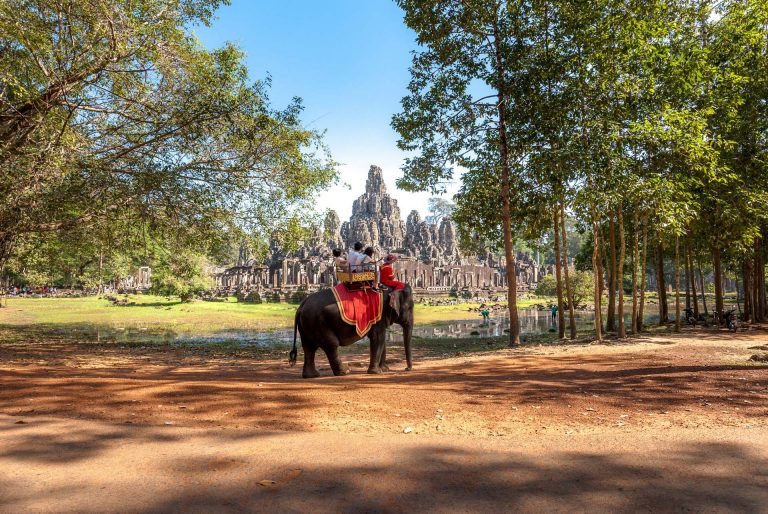
Siem Reap
Siem Reap is a dusty, fun and energetic city. Most visitors to Southeast Asia will find themselves in Siem Reap at some point, if not particularly for the city itself but for its world famous temples of Angkor. A speedy tuk-tuk ride out of the city center and the jungle-enshrined temple complex appears like something from the pages of a book.
The city of Siem Reap itself is a place for tourists to let their hair down, enjoy dinner and drinks with friends and dance the night away, if this isn’t your scene then maybe you can spend time unwinding at one of the many massage parlors.
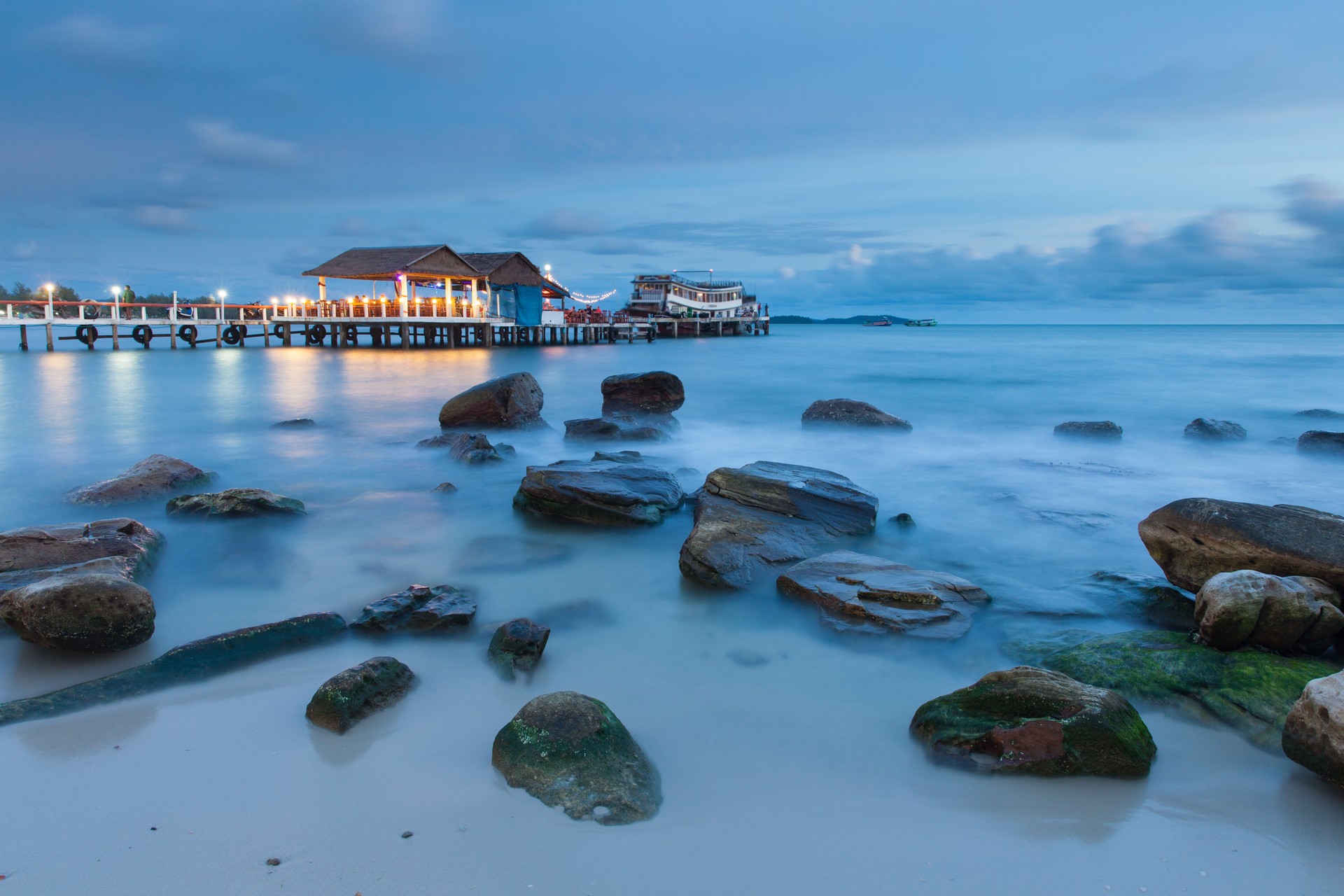
Sihanoukville
Sleepy and secluded, Sihanoukville is Cambodia’s premier seaside resort city. The little fishing port has become a magnet for tourists who want to kick back and relax along Cambodia’s coastline.
The city is a resort destination that still remains under the radar in terms of mass tourism, but big business and development is on its way. The white sand beach is edged by small shacks and bars where you can find people reclining with a drink, while they spend days gazing out to sea.
Hotels here are numerous and often very affordable, and although there is often a seedy feeling around the town, with many lingerers and single older men traveling alone, the city is a jumping off point to Cambodia’s tropical islands.
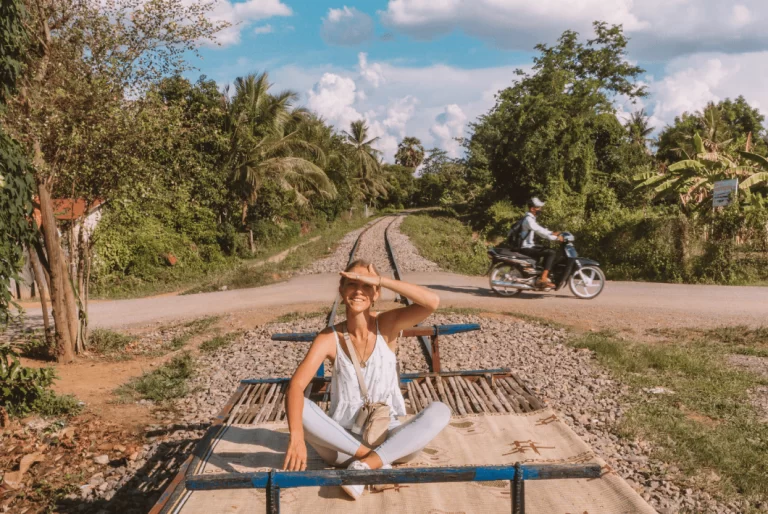
Battambang
The city of Battambang, with its crumbling colonial architecture and stunning surrounding countryside, is proving to be somewhat of an artistic hub. Battambang isn’t only a space for Cambodia’s future artistic talents, but also a place to take in ancient temples and pagodas.
The dreamily dozy city is the perfect antidote to the swirling city streets of Cambodia’s bigger cities. There is a threat from big business to tear down the town’s center beautiful old buildings so make sure to visit here before it’s too late and concrete replaces history.
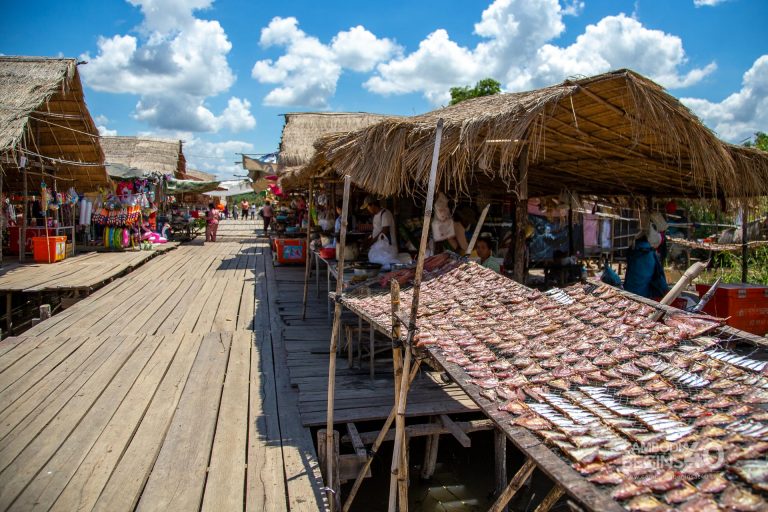
Kratie
Kratie is a small city that’s shaped by the bends of the majestic Mekong. Travelers stop off in the town to enjoy its local life and for the chance to spot the Irrawaddy dolphins that live in this part of the river.
Sitting in one of the markerside cafes reveals the hard and impoverished lives of many of the locals – children without clothes beg while travelers snap pictures of them on their SLRs. However, the people of Kratie are amazingly welcoming to tourists.
Take the fun ferry boat across the Mekong and spend a day pedaling around Koh Trong island to see the small island community that live in the middle of the river.

Kampot
Kampot is a city by name but not in nature. The sleepy hedonism of the city seduces travelers who plan to stay for a couple of nights but stay much longer. The quiet streets are ideal for cycling around on a push bike, past locals who are busy with their daily chores and children who are heading to school.
The city has a friendly, family feel and people here are welcoming. Like a hippie enclave, travelers often stop here and stay long term, deciding to set up small businesses. Mingle with other visitors in the cafes and sleep in one of the many great guest houses.
Koh Rong
One of the most beautiful places in Cambodia, those looking for adventure will love the island paradise Koh Rong that has several beaches like the Koh Toch beach. It is among the top Cambodia tourist attractions. A lot of activities on these lovely beaches makes Koh Rang one of exciting places to see in Cambodia.
Here, you can go snorkelling and see diamond fish, seahorses, sergeant fish, parrot fish, jumping fish, diamond fish, blue-spotted ribbon tail rays, and squids. If you are a hardcore water sports lover, go diving and kayaking. Also, pay a visit to the rope adventure park where you can go zip lining. To witness some abundant wildlife head over to Police Beach which has a butterfly farm and mini zoo during your sightseeing in Cambodia.
Buy phone sim
When you come to Cambodia, you can easily buy a phone sim at any phone store. But to be more secure, you should go to places that provide mobile and telecommunications services to buy sims because stores will often arbitrarily increase prices or give out expired sims.
You can also buy H Beeline and QB sim cards right at the airport for $5/sim. Just present your passport and valid visa and you can buy a SIM card with a variety of different network capacity packages to use.
Exchange money
Although the currency in Cambodia is the Riel, the fact is that the Dollar is also widely used here. Therefore, you do not need to waste time exchanging Cambodian Riel for use.
In addition, although there are many places that accept credit cards for payment, you should also bring a little cash to buy sugar snacks. street or household items when needed.
Domestic transportation
When traveling to Cambodia, you will also have many options for transportation within the city such as tuk tuk, motorbike taxi, cyclo or bus. However, if you choose to go by tuk tuk or motorbike taxi, you should proactively ask the price and bargain before getting in the car to avoid being “screamed” at the price when you arrive.
- Cambodians spend Riel (pronounced Ria), 1 Riel = 5.36 Vietnamese dong (just multiply Riel by 5 to get Vietnamese currency) or you can spend dollars US Dollar 4000 Riel = 1USD. Cambodians spend both US dollars as well as their Riel currency.
- The experience of traveling to Cambodia is that you should bring less than 3000 USD with you so you do not need to declare, purchases under 300 USD will be tax exempt. When entering the country, the passport must be valid > 6 months.
- The average food price in Cambodia ranges from 1 – 1.5$.
- Absolutely do not pat a child’s head, because they believe that a child’s head is a very sacred place.
- Do not give things or money with your left hand because Cambodians consider it an unclean action.
- When entering the temple, you absolutely must not wear a hat, remove your shoes and do not stand near or touch the monk.
Capital
Phnom Penh
Population
Over 17mil
curency
Riel (KHR)
Biggest City
Phnom Penh
LANGUAGE
Khmer
Best time to travel
Nov - Feb
Lastest News
Plan Your Trip!
Let us transform your dreams into the ultimate vacation experience. Our consultation and itinerary design services are complimentary until you are completely satisfied with the proposed program. We design; you decide.



